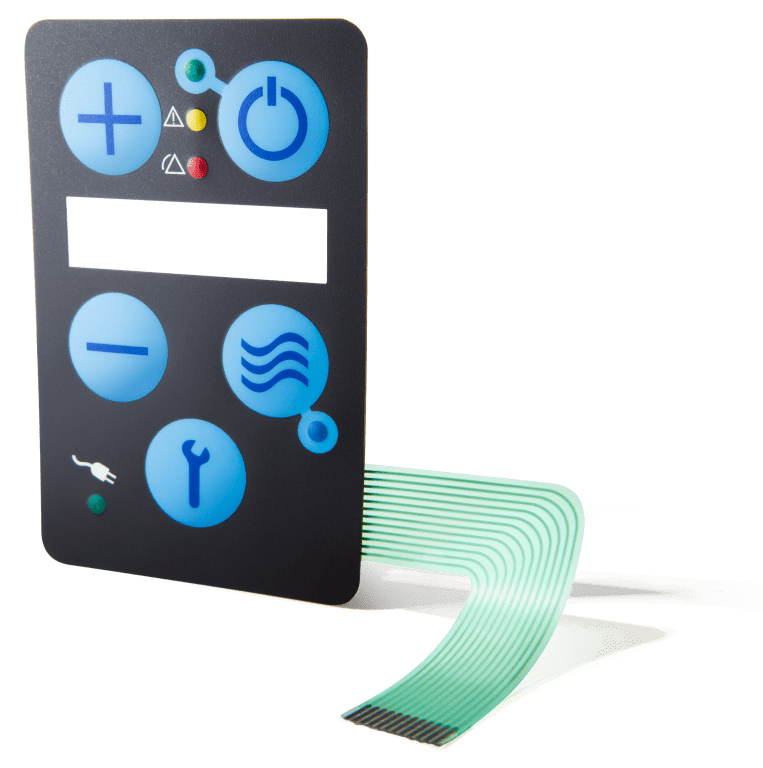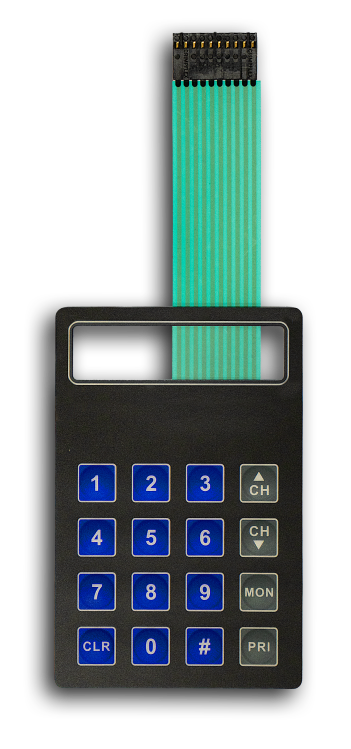The Role of Membrane Switches in Enhancing Product Aesthetics
The Role of Membrane Switches in Enhancing Product Aesthetics
Blog Article
Comprehending the Importance of Membrane Switches in Interface
Membrane buttons are integral parts in the style of effective customer interfaces, promoting not just functionality but additionally enhancing visual charm and user interaction. Their unique functions, such as resistance to customizable styles and ecological elements, make them ideal for a diverse variety of applications across several sectors. As we explore the numerous advantages and future patterns linked with Membrane innovation, it comes to be clear that these buttons are greater than simply components; they stand for a merging of development and functionality. The effects of this technology on individual experience deserve examining even more.
What Are Membrane Switches?
The spacer layer, which consists of sticky residential properties, enables for the separation of the circuit layer from the overlay, ensuring that the button continues to be in a non-activated state up until pressed. When pressure is related to the overlay, it compresses the spacer layer, bridging the void and finishing the circuit in the underlying layer. This style not only lowers the physical room required for conventional mechanical buttons yet likewise enhances the resilience of the tool, as Membrane buttons are generally resistant to dust, dampness, and other ecological factors.
Commonly located in applications ranging from customer electronics to medical gadgets, Membrane buttons are essential to modern innovation, providing a user-friendly and effective interface that lines up with contemporary style requirements.
Benefits of Membrane Switches
While countless button technologies exist, Membrane Switches offer unique advantages that make them especially preferable in various applications. Among the primary benefits of Membrane switches is their small layout, which permits space-saving applications in devices where genuine estate is restricted. Their thin profile not just boosts aesthetic charm yet likewise promotes lightweight building.
An additional significant advantage is their resistance to ecological elements. Membrane buttons are typically secured versus dampness, dust, and pollutants, making them excellent for use sought after settings, such as medical gadgets and industrial tools. This durability prolongs the life-span of the button, reducing maintenance expenses and improving integrity.
Moreover, Membrane switches can be customized to meet particular style demands, including one-of-a-kind graphics and shades that boost user interaction. Their responsive feedback options can also be tailored to offer a rewarding individual experience. Furthermore, Membrane switches are affordable, especially in high-volume applications, as they can be created effectively.
Applications in Different Industries

In the consumer electronics field, Membrane buttons are widespread in devices such as microwaves, cleaning makers, and remote controls. Their responsive comments and visual click to investigate choices enhance customer experience while offering a sleek, contemporary look. In addition, automobile suppliers use Membrane switches in control panel controls and infotainment systems, where room is limited, and customer interaction is critical.
Additionally, the industrial market leverages Membrane buttons in control panels for machinery and tools, permitting instinctive operation in often harsh atmospheres. Their resistance to chemicals and wetness ensures longevity and dependability in these applications. On the whole, the adaptability of Membrane Switches contributes dramatically to their extensive usage, making them essential in numerous technological domain names.
Layout Considerations for Membrane Buttons

When developing Membrane buttons, numerous vital considerations must be thought about to make certain optimum functionality and user experience. First of all, the option of products is crucial; choosing long lasting, high-grade substratums can boost the button's longevity and resistance to environmental factors such as moisture and temperature fluctuations.
Second of all, the style of the graphic overlay ought to prioritize clarity and convenience of usage. Symbols and text should be legible, and the layout needs to promote instinctive interaction (membrane switches). Additionally, tactile responses is necessary; integrating a tactile dome or other devices can enhance the user experience by giving physical verification of activation
One more important variable is the button's electrical efficiency. Designers must make certain that the conductive traces are appropriately developed to minimize resistance and stay clear of signal interference. This involves analyzing the needed actuation pressure and making sure compatibility with the electronic parts they will user interface with.

Future Fads in Membrane Innovation
As technology proceeds to advance, Membrane buttons are poised to progress significantly, driven by advancements in materials and producing strategies. One emerging pattern is the unification of advanced products, such as conductive inks and flexible substrates, which enhance toughness and reduce the general weight of Membrane buttons. These products not only enhance the responsive feedback but likewise enable the design of switches that can stand up to harsher ecological problems.
Furthermore, the combination of touch-sensitive modern technologies look at here is changing traditional Membrane Switches into more interactive interface. Capacitive touch sensing units installed within Membrane button panels can provide a more responsive and user-friendly customer experience, aligning with the growing demand for sleek, modern styles in consumer electronics.
Furthermore, improvements in printing strategies, such as electronic and 3D printing, make it possible for quick prototyping and modification of Membrane buttons. This flexibility enables suppliers to respond faster to market demands and consumer preferences.
Last but not least, sustainability is ending up being a significant focus, with manufacturers exploring environment-friendly products and processes. As these fads unfold, the future of Membrane modern technology promises enhanced performance, aesthetic allure, and ecological obligation, solidifying their role in advanced interface throughout different markets.
Conclusion
In conclusion, Membrane Switches represent a vital part in the style of user interfaces, combining capability with aesthetic flexibility. Their benefits, consisting of sturdiness and resistance to environmental factors, make them ideal for diverse applications like this throughout different sectors. Thoughtful style considerations improve user communication and experience. As developments in technology proceed, the evolution of Membrane switches is anticipated to further improve interface, driving technology and enhancing usability in a progressively complex technical landscape.
Membrane switches are important parts in the design of efficient customer interfaces, facilitating not only performance yet also improving visual allure and customer interaction.Membrane Switches serve as an essential part in various individual interfaces, assisting in a smooth communication between users and electronic gadgets.While many button modern technologies exist, Membrane Switches offer distinct advantages that make them especially desirable in different applications.Additionally, Membrane buttons can be tailored to fulfill details design requirements, incorporating distinct graphics and colors that enhance user interaction.In conclusion, Membrane Switches stand for a vital component in the layout of customer interfaces, incorporating capability with visual adaptability.
Report this page